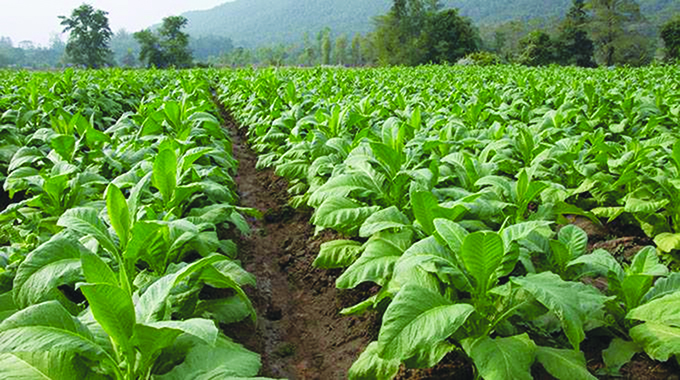Commodities market in Zimbabwe critical

Dr Keen Mhlanga
Markets are widely recognised as playing a critical role in improving economic growth, promoting food security, and enabling them to meet their basic needs. A commodities market is a place where raw materials and main products may be bought, sold, and traded. One or more retail outlets may be prevalent in the marketplace, catering to a specific demographic. Hard and soft commodities are two types of commodities that are frequently separated. Natural resources which can only be mined or extracted, such as gold, rubber, and oil, fall into the hard commodity category, whereas commodities such as tobacco, maize, and cotton, fall into the soft commodity category.
Maize, cotton, sugar, groundnuts, beans, and cow peas are the primary crops grown in our mother land. While the minor crops in commercial terms such as beans, cow peas and groundnuts are considered to be the crops for women.
The major commercial crops which generate cash income are seen as men’s crops, and these include tobacco, cut-flowers, raw sugar cane, cotton, chilled vegetables, coffee, fruits and tea.
Farmers may take advantage of the Zimbabwe Mercantile Exchange (ZMX) registered by the Agricultural Marketing Authority (AMA) to operate a commodities exchange. It also operates a Warehouse Receipt System according to the Warehouse Receipt (General) Regulations, 2020. ZMX is operated by the Financial Securities Exchange and was founded as a joint venture between the Financial Securities Exchange (FINSEC) and the TSL Limited representing the private sector and the Government.
The exchange-traded commodities (ETC) include, seed oils, tea, macadamia nuts, red sorghum, white sorghum, millet and sugar beans. The warehouse receipt can be used as collateral and it carries the ability to facilitate further trading and borrowing.
Agriculture is the backbone of Zimbabwe’s economy, as most Zimbabweans still live in rural areas and rely on agriculture and other rural economic activities for a living. It provides employment and income for 60-70 percent of the population, supplies 60 percent of the raw materials required by the industrial sector and contributes 40 percent of total export earnings.
Considering the large amount of employment in the sector, it provides an average of 17 percent of annual GDP, depending on rainfall patterns.
Milk alone is one of the most produced and valuable agricultural commodities worldwide. According to the Second Round Crop and Livestock Assessment Report 2020/2021 Season by the Ministry of Lands, Agriculture, Fisheries, Water and Rural Resettlement, total milk output fell 5.33 percent in January 2021, from 6 833 594 litres in 2020 to 6 469 310 litres in 2021, 10.68 percent in February 2021, from 6 072 670 litres to 5 423 900 litres 2021, and 6.05 percent in March 2021, from 6 322 129 to 5 939 808. The present production levels are still insufficient to meet the 120 million litres needed to meet national demand.
The dairy herd currently numbers 39 000 animals, with 19 000 milking cows. The national goal for milking cows is 32 000. The average daily yield per cow was 13 litres. Small-scale dairy farming still accounts for roughly 4 percent of total milk output in the country.
Grain Marketing Board was established under the Maize Control Act of 1931 as the Maize Control Board in response to the 1930 World Recession to address food insecurity challenges and renamed the Grain Marketing Board in 1951 when other crops, like rice and wheat, were added to its mandate4.
The mission of GMB is to ensure food security in Zimbabwe through the marketing of grain related agricultural products with particular reference to staple food products, namely maize and wheat. The GMB is, as its name implies, an institution whose main function, is the orderly marketing of agricultural products, mainly grains, oilseeds, edible beans and coffee within Zimbabwe, maintain strategic Grain Reserves, implement the Input Supply Credit Scheme to stimulate agriculture, provision of agricultural grain handling, storage and processing facilities and dealing with market failures, buyer of last resort.
The GMB buys a variety of crops from farmers and sells them into the domestic agro-processing industry in addition to exporting these products to regional and international markets when in excess and imports these products from both regional and international markets, when in short supply, so as to promote food security at both national and household level. Many farmers sell their products such as maize to GMB after harvesting.
Zimbabwe’s mining sector plays a very significant role in the development of the country as it has continued to bring much needed income into the country. It contributes to foreign exchange, Gross Domestic Product (GDP), government revenues, capital formation and infrastructure development. It also has become the fastest growing sector since 2009, with a growth of up to 33 percent in 2009 to an estimated growth of 47 percent in 2010.
Zimbabwe has a total land area of over 39 million hectares, of which 33.3 million hectares are used for agricultural purposes. The remaining 6 million hectares have been reserved for national parks and wildlife, and for urban settlements.
The distinguishing characteristic of Zimbabwe agriculture is its dualism, i.e. the existence of two major subgroups based on the size of landholdings. The larger group is unsophisticated and comprises about 7.1 million smallholder and communal farmers occupying a total of 21 million hectares.
In general, communal and smallholder farmers occupy areas of lower natural potential for agriculture in terms of rainfall, soils and water for irrigation. In addition, these areas are of lower economic potential because of the distances from markets and poor communication and social infrastructure. Until recently, the other group comprised about 4 000 large-scale farmers with very sophisticated production systems and occupies about 11 million hectares of land, primarily located in the areas of high agricultural and economic potential.
Communal and commercial farmers are also distinguished by the fact that the former produce mainly for own consumption, and the latter produce mainly for commerce. The main agricultural products produced by communal farmers are maize (the staple food), groundnuts, other grains, beans, vegetables, meat, milk and fuelwood. Commercial farmers concentrate on cash crops such as tobacco, horticultural products, particularly cut flowers, coffee, maize, groundnuts, sorghum, soya beans and sunflowers.
Zimbabwe’s principal agricultural exports in descending order include tobacco (60 percent of total agricultural production), cotton lint (about 10 percent), raw sugar (9 percent), tea and coffee, horticultural products and maize (in non-drought years). Imports of agricultural products are limited mainly to wheat and maize in drought years.
Agricultural sector accounted for 18 percent of the country’s GDP in 2005; both commercial and subsistence farming are being practiced to produce various crops and animals.
However, a significant portion of the products that are produced commercially are normally being exported
The principal crops produced in the Zimbabwean communal areas are maize, cotton, sugar, groundnuts, beans and cow peas. While the minor crops in commercial terms such as beans, cowpeas and groundnuts are considered to be the crops for women.
The major commercial crops which generate cash income are seen as men’s crops, and these include Tobacco, Cut-Flowers, Raw Sugar Cane, Cotton, Chilled Vegetables, Coffee, Fruit, Tea. More often than not, the significant part of the crops that are produced commercially, are being exported to other countries. On the other hand, most of the crops that are produced in the communal area are for consumption.
Dr Keen Mhlanga is the executive chairman of FinKing Financial Advisory. He can be contacted on [email protected] or +263719516766











Comments